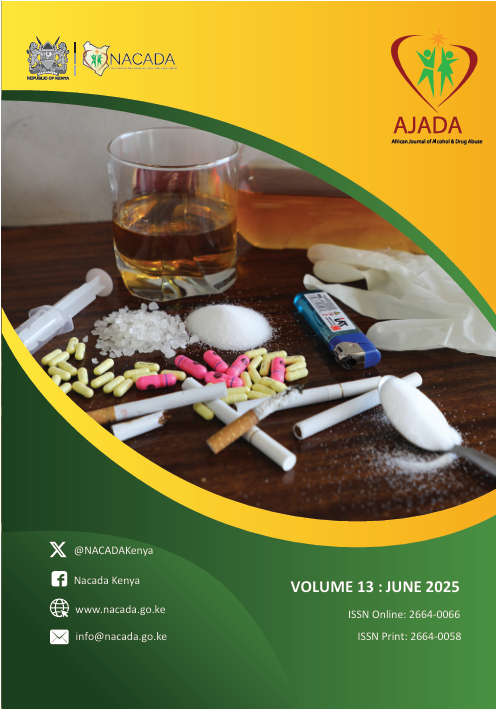Burden of drugs and substance abuse among university students in Kenya
Keywords:
Drugs and substance Use, drugs and substance of abuse, University students, KenyaAbstract
Drugs and substance use among university students has been recognized as a global public health issue. Adolescents are particularly vulnerable to drugs and substance use (DSU) including addiction.This study sought to determine the burden of DSU among university students in Kenya. The study utilized a cross-sectional study design covering a representative sample of 17 public and private universities in Kenya. A total of 15,678 respondents were interviewed. Data showed that 54.2% of the students were male and 45.2% were female while 0.6% did not state their sex. Accordingly, alcohol, tobacco, cannabis, and khat were the most available and accessible substances within the university and in the neighbourhood. Cannabis was the most commonly accessible narcotic drug with an emerging trend in the availability of cannabis edibles. The findings also showed a new trend in the availability of emerging psychoactive substances within the university environment particularly methamphetamine, prescription drugs, codeine syrup, ecstasy/ gamma-hydroxybutyrate (GHB)/lysergic acid diethylamide (LSD)/ psychedelics, ketamine, and morphine. The findings also showed that 45.6% of university students had used at least one drug or substance of abuse in their lifetime. Analysis on past month use showed that 26.6% of university students were currently using at least one drug or substance of abuse. Findings on individual drugs showed that alcohol was the most widely used substance with a past month prevalence of 18.6% followed by tobacco (12.0%), cannabis (10.7%), khat (10.2%), inhalants (4.3%), prescription drugs (2.2%), heroin (1.7%), cocaine (1.6%), codeine (1.4%), methamphetamine (1.4%), ecstasy/ GHB/ LSD/ psychedelics (1.3%) and ketamine (0.1%). Findings also showed a high burden for severe alcohol use disorders (8.7%) among university students. The study therefore concluded that universities in Kenya were not drug free environments and a three-pronged intervention strategy focusing on the university management, parents and students was recommended.
Downloads
Published
Issue
Section
License
Copyright (c) 2025 Morris Kamenderi, John Muteti, Stephen Kimani, Timothy Lemiso, Clara Soo, Felistas Kanana

This work is licensed under a Creative Commons Attribution-NonCommercial-ShareAlike 4.0 International License.


